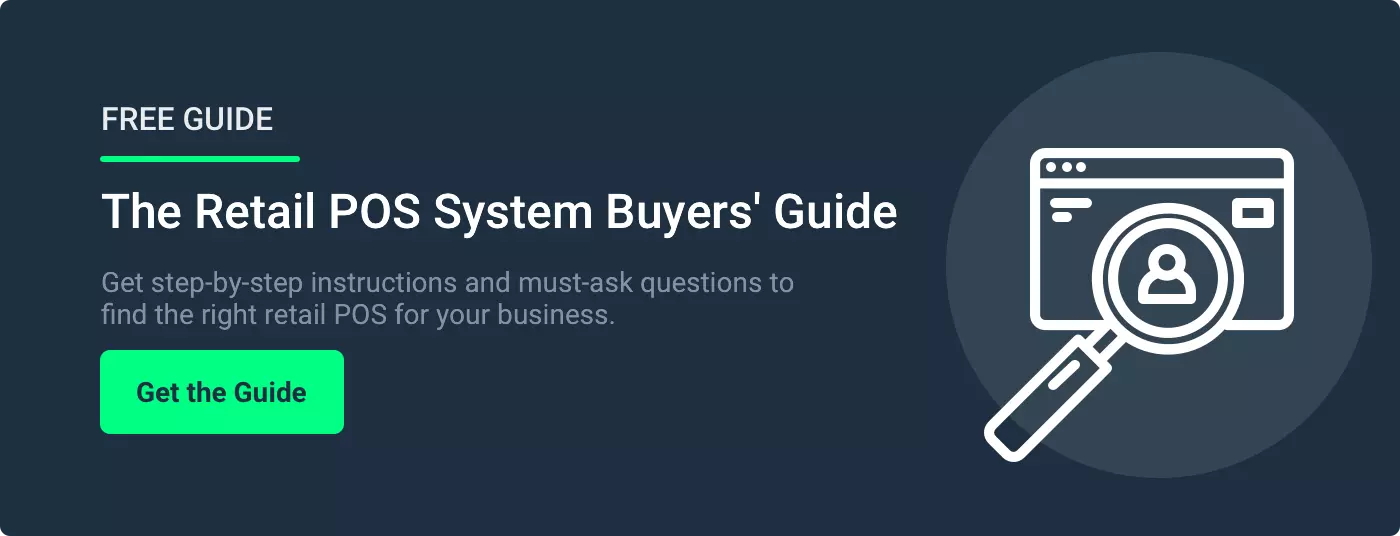$200 million.
That’s how much Home Depot had to pay for its infamous POS breach that resulted in the theft of 50 million credit card numbers. And Home Depot is far from the only large retailer to have experienced a POS breach. Target, Home Depot, Wendy's, Chipotle, and Forever 21 have all fallen prey to devastating POS cyberattacks in recent years.
If large retailers can fall prey to POS breaches, smaller retailers have to be especially careful. If you want to avoid breaches — and the financial and reputational consequences that come along with them — you need to take appropriate steps to secure your customers’ data.
But how can you improve POS cybersecurity for your business without breaking the bank?
In this post, we’ll explore the concept of POS cybersecurity and its impact on your business. We’ll also share six specific tips that will help you protect your POS data from costly breaches.
What Is POS Cybersecurity?
Point of sale (POS) cybersecurity refers to the measures taken to protect the integrity and confidentiality of data processed through point of sale systems. POS systems handle sensitive information such as payment card data, customer information, and transaction details. This critical data makes your point of sale system an attractive target for cybercriminals.
Several factors increase the attack surface of your POS system. You must keep an eye out for:
- Malware infections
- Weak authentications
- Unpatched software
- Issues with third-party integrations
With the right processes in place, you can strengthen your POS system’s cybersecurity, keeping your store and customer data safe. But how can you get started improving cybersecurity in your store?
Let’s explore some of the top tips you should follow to strengthen POS cybersecurity for your business.
6 Tips for Strengthening POS Cybersecurity
1. Ensure Industry Compliance
Your business needs to comply with the Payment Card Industry Data Security Standard (PCI DSS) guidelines to keep your customer’s payment card data safe. You should also check if there are any other specific rules or regulations that apply to your industry or state, such as HIPAA for healthcare-related businesses or the Telecommunications Act for telecom companies.
Remember, compliance isn't just about protecting user data; it's also about shielding yourself from hefty fines and penalties. Stay on top of regulations and security measures to keep your business and your customers' data secure while avoiding any costly repercussions down the line.
2. Encrypt Data Transactions
Encrypting all data transactions between the POS terminal and the central server ensures that credit card details and personal customer data remain locked up tight. We're talking about using top-notch encryption protocols like SSL/TLS, the gold standard in the industry, to secure those communication channels.
Related Read: Point of Sale System for Retail: 5 Unique Features
With the right encryption protocols in place, you can rest easy knowing that cybercriminals won't be able to sneak in and snatch up valuable data while it's in transit.
3. Coach Employees on Security Best Practices
You can have the strongest systems in place, but often the technology isn’t your issue: if your employees aren’t briefed on security best practices, it doesn’t matter how many locks you put on your system, because they may accidentally let an attacker in the front door.
You can combat these risks by providing regular training sessions to equip staff with the knowledge and skills needed to identify and mitigate security threats.
- Provide comprehensive training on how to spot phishing attempts, recognize suspicious activities, and respond promptly to security incidents.
- Encourage an open dialogue where employees feel comfortable reporting any unusual behavior or security concerns to the IT department.
- Restrict access so that only authorized personnel have access to your POS system. This helps reduce your overall threat surface.
Related Read: 5 POS Training Tips to Help Your Workforce Successfully Onboard
4. Develop an Incident Response Plan
Even with all your precautions, the risk of POS breaches can never be zero. That's why you need a solid incident response plan ready to go, just in case the worst happens. This plan should lay out clear steps for dealing with security breaches or data compromises involving POS systems.
Your incident response plan is your playbook for swiftly and effectively handling any cyber attacks that come your way, minimizing the fallout, and getting things back on track as soon as possible.
Part of this plan is putting together a dedicated response team. Think of them as your crisis management squad. These people will jump into action when the alarm bells start ringing. You'll want a mix of skills here — IT security experts, retail workers, marketing executives — the whole nine yards. Having this team in place means you're not scrambling around in a panic if something does happen. You've got a plan, and you're ready to execute it.
5. Perform Regular Security Audits
POS cybersecurity is not a one-time project. It's something that needs to be woven into the fabric of your overall cybersecurity culture. Think of it like brushing your teeth — you don't just do it once and call it done. It's an ongoing commitment to keeping your systems safe and secure, day in and day out.
One key way to secure your POS system is by conducting regular security audits. These audits are like giving your system a thorough check-up to spot any potential weaknesses or vulnerabilities. That means keeping all your software up to date, applying patches as soon as they're available, and making sure your firmware is up to snuff on all your POS devices.
Remember, security audits aren’t just about finding your weak points; they’re also about fixing them. Once you've got your audit results in hand, make sure you take action on any recommendations to shore up your defenses and keep those cyber threats at bay.
6. Implement a Secure POS System
Our final tip for improving POS cybersecurity is to invest in the right point of sale system.
Look for a POS system that's not just functional but packed with advanced cybersecurity features to keep your data safe and sound. But it's not enough just to have the latest and greatest tech — you need your team on board too. Make sure they're fully clued up on how to use the system to its fullest potential and leverage all those built-in security measures.
POS Nation offers a robust suite of cybersecurity features to give you peace of mind. With PCI compliance and role-based access, your POS system strengthens, not weakens, your overall security posture.
Your POS Cybersecurity Is Your Business Security
Safeguarding your POS system data is more important than ever. It's not just about protecting a device; it's about safeguarding your business from potential breaches and vulnerabilities. This is why investing in a POS solution equipped with advanced security features is essential.
From encryption technologies to real-time threat detection and prevention mechanisms, a secure POS solution can provide the peace of mind you need to focus on running your business effectively.
If you’re seeking top-notch protection and comprehensive security features in your POS tool, check out POS Nation. Our POS systems are designed with cutting-edge security features to mitigate risks and keep your business operations secure. Schedule a demo with POS Nation today and take the first step towards strengthening your security posture.







 by Brian Sullivan
by Brian Sullivan

 by Cort Ouzts
by Cort Ouzts


 by Spence Hoffman
by Spence Hoffman